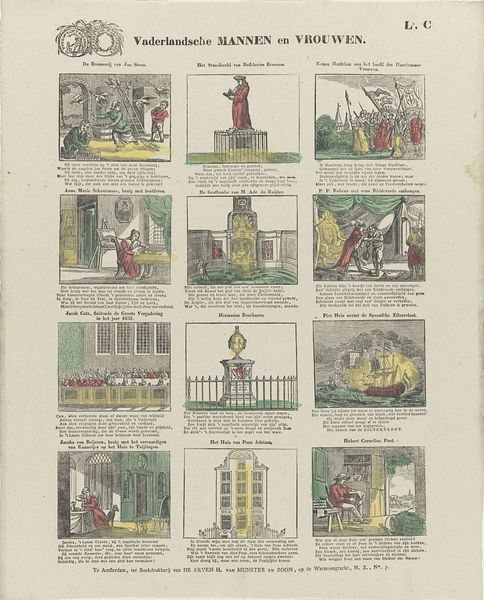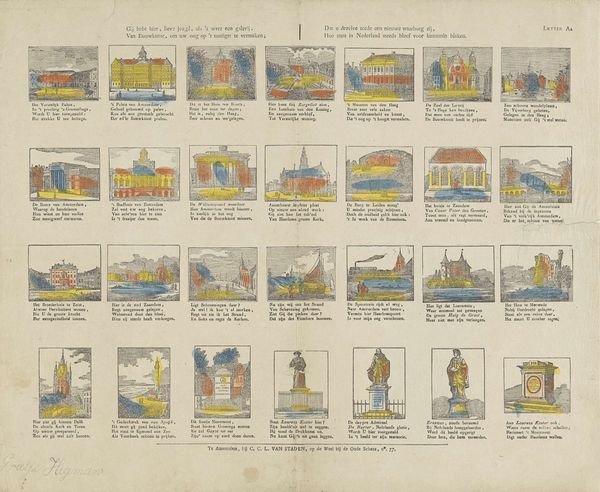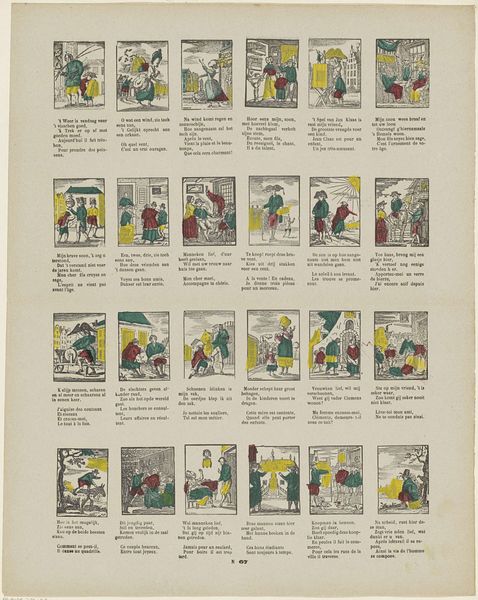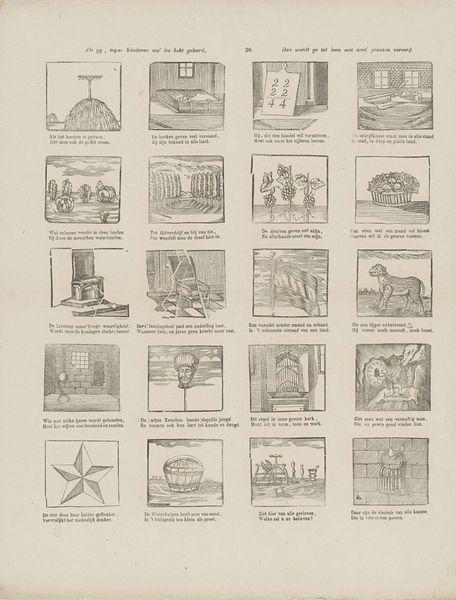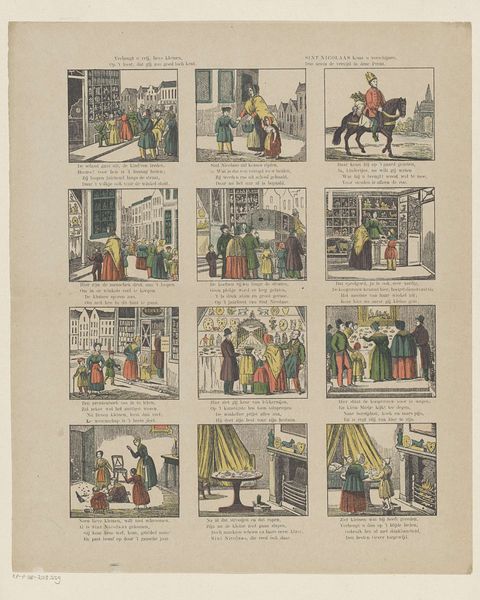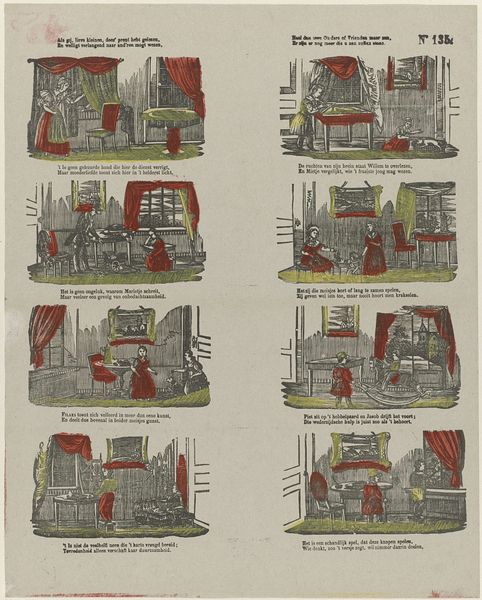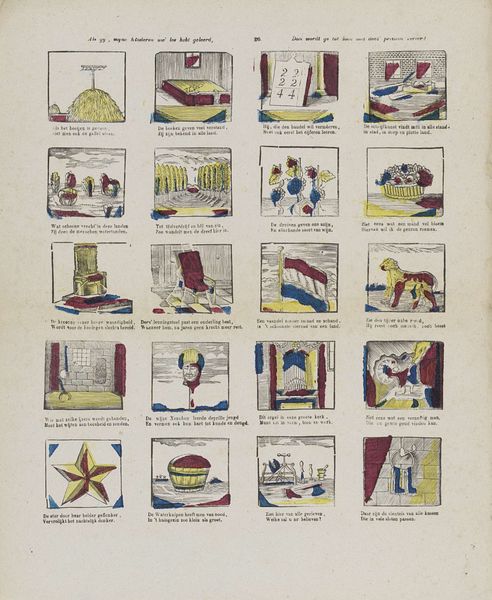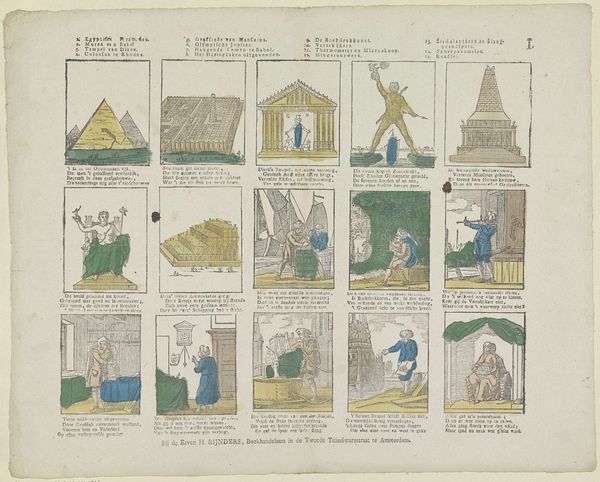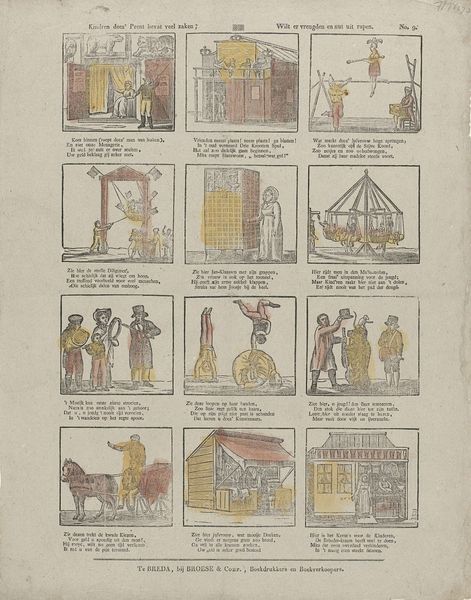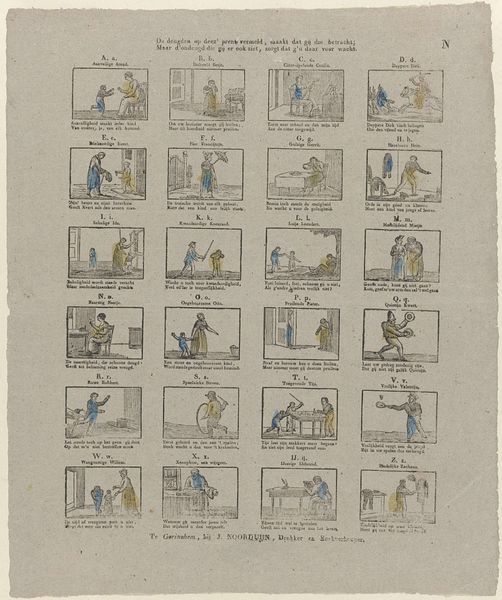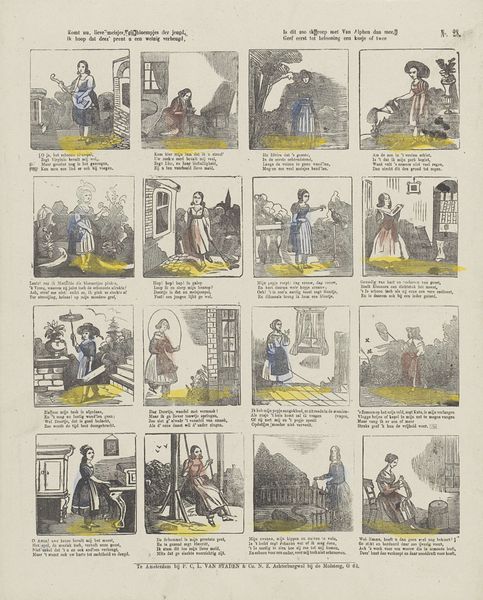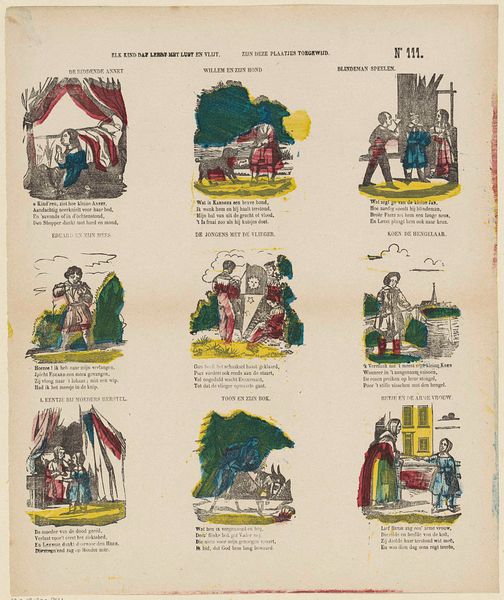
Zie hier, lieve Kinders, de afbeeldingen van een aantal gebouwen, die ge welligt gezien zult hebben, of / welligt wenscht te zien, doch die in ieder geval, zoo ik hoop, u genoegen zullen geven 1850 - 1870
0:00
0:00
lithograph, print
#
lithograph
# print
#
cityscape
#
genre-painting
Dimensions: height 394 mm, width 323 mm
Copyright: Rijks Museum: Open Domain
Curator: This lithograph, created by Willem Bal between 1850 and 1870, presents a variety of buildings and monuments. It's titled "Zie hier, lieve Kinders, de afbeeldingen van een aantal gebouwen, die ge welligt gezien zult hebben, of / welligt wenscht te zien, doch die in ieder geval, zoo ik hoop, u genoegen zullen geven." quite a mouthful! What strikes you immediately about it? Editor: Well, it's the ordered grid of images and limited color palette. The structures themselves seem presented more as archetypes, removed from any specific location or narrative, focusing more on their architectural qualities, perhaps? Curator: I see that. Structurally, each miniature scene uses a limited, almost diagrammatic approach. Bal highlights key architectural elements, defining forms through line and subtly suggesting depth through minimal shading and hatching. The pops of color, while sparing, do direct the eye to essential details. Editor: The didactic tone is quite apparent, evidenced by the long title. It speaks directly to children. Consider this piece within the expanding Dutch middle class during the 19th century and the increasing importance placed on national identity. It perhaps served as a means of introducing young citizens to their country’s important monuments and architectural heritage. Curator: Precisely. You see the strategic placement of these various Dutch landmarks, statues, and public buildings all methodically laid out. This piece could definitely serve a broader social purpose by disseminating images of Dutch history, pride, and cultural literacy to future generations of the Netherlands. Editor: But isn't there also a dimension of accessibility here? Prints, compared to painting, democratize art consumption. Here we have a compilation, a pocket-sized pantheon of Dutch landmarks, rendered affordable. What this shows is how identity, culture, and history becomes less a passive idea and more an owned product available to a mass audience. Curator: So, both visually intriguing and historically informative, wouldn’t you agree? A small gem reflecting the architectural aesthetic, but also an evolving culture in the nineteenth century. Editor: I think seeing the piece within the framework of national identity formation gives this unassuming little lithograph greater significance. Food for thought.
Comments
No comments
Be the first to comment and join the conversation on the ultimate creative platform.

